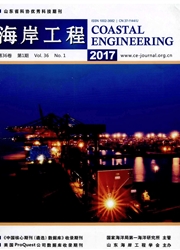

 中文摘要:
中文摘要:
一个海藻的花蕾被定义为一个水的系统的浮游植物的生物资源的相对快速的增加。在到 2007 年 4 月 24 日的 3 月 30 日期间,巡航在中央南部的 Huanghai 海被进行调查春天花蕾过程。浮游植物的空间、时间的变化被讨论基于在原处观察和同时的遥感数据。海藻的开花在时间、空间的规模快速改变了的炸药,由于高度补缀的分发。在 2 个锚车站(BM1 和 BM2 ) 获得的数据在现在的学习被分析。水平移流被推测为在叶绿素的集中的突然的减少负责 --at 车站 BM1 和 BM2。在车站 BM2,中间的高叶绿素 -- 集中,与低温度与一致,被发现是从定位到这个地点的东方的沿海的更冷的水团的 advected。
 英文摘要:
英文摘要:
An algal bloom is defined as a relatively rapid increase in the biomass of phytoplankton in an aquatic system. During 30 March to 24 April 2007, a cruise was conducted in the central Southern Huanghai Sea to investigate the spring bloom processes. The spatial and temporal variations of phytoplankton are discussed based on the in-situ observations and simultaneous remote sensing data. The explosive algal blooming varied quickly in temporal and spatial scales, due to the highly patchy distribution. Data obtained at the 2 anchor stations (BM1 and BM2) were analyzed in the present study. Horizontal advection is speculated to be responsible for the abrupt decrease in the concentration of chlorophyll-a at stations BM1 and BM2. At station BM2, the intermediate high chlorophyll-a concentration, coinciding with the low temperature, was found to be advected from the inshore colder water mass located to the east of the site.
 同期刊论文项目
同期刊论文项目
 同项目期刊论文
同项目期刊论文
 期刊信息
期刊信息
